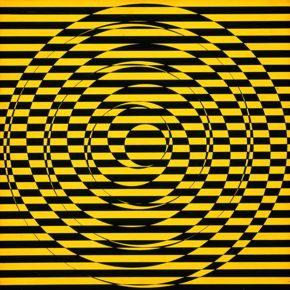Arte Concreta at the MFAH February 1, 2016

Maurício Nogueira Lima, Objeto rítmico no. 2 (segunda versão) [Rhythmic Object no. 2 (second version)], 1970s, first version 1952, the Museum of Fine Arts, Houston, the Adolpho Leirner Collection of Brazilian Constructive Art, museum purchase funded by the Caroline Wiess Law. © Selma Sevá
Ferreira Gullar, “I - O Grupo de São Paulo: I Exposição Nacional de Arte Concreta.” Jornal do Brasil: suplemento dominical (Rio de Janeiro, Brazil), February 17, 1957, 9. ICAA ID 1087166
José Geraldo Vieira, "Exposição Nacional de Arte Concreta." Habitat (São Paulo, Brazil), no. 38 (January, 1957). ICAA ID 1087109
On December 4, 1956, the Museu de Arte Moderna (Museum of Modern Art) in São Paulo, Brazil, inaugurated the Ia Exposição Nacional de Arte Concreta (First National Exhibition of Concrete Art), an event that brought together poets and visual artists from the country’s two main cultural centers: São Paulo and Rio de Janeiro. The exhibition later traveled to the Ministry of Education and Health in Rio de Janeiro, which allowed further exposure to art critics from both cities.
Upon seeing the exhibition, art critic Ferreira Gullar wrote about the differences between the two groups in his article “I - O Grupo de São Paulo: I Exposição Nacional de Arte Concreta” (Jornal do Brasil, Suplemento Dominical, Rio de Janeiro, Brazil, February 17, 1957, 9): Whereas the São Paulo concretistas were more interested in issues of movement in design and expression, the Rio de Janeiro group focused on the use of color and materials.
In response, São Paulo–based artist Waldemar Cordeiro aimed to complicate Gullar’s perceived differences and similarities between the two groups, launching a public debate in the national press carried on by other artists and critics, including Mário Pedrosa and José Geraldo Vieira. This debate led to the theoretical articulation of what constituted Concrete art, as founded by the São Paulo group in 1952, and ultimately to the creation of a separate Rio de Janeiro–based Neoconcrete art movement in Rio in 1959. Readers can access this rich discussion at the ICAA’s shared collections site.
Now, nearly 60 years after the event, 18 of the 25 participating artists and poets in this groundbreaking exhibition are represented in the collection of the Museum of Fine Arts, Houston:
- Geraldo de Barros (1923–1998)
- Aluísio Carvão (1920–2001)
- Amílcar de Castro (1920–2002)
- Lothar Charoux (1912–1987)
- Lygia Clark (1920–1988)
- Waldemar Cordeiro (1925–1973)
- João José da Silva Costa (1931–2014)
- Hermelindo Fiaminghi (1920–2004)
- Judith Lauand (born 1922)
- Maurício Nogueira Lima (1930–1999)
- Rubem Ludolf (born 1932)
- César Oiticica (born 1968)
- Hélio Oiticica (1937–1980)
- Lygia Pape (1927–2004)
- Luís Sacilotto (1924–2003)
- Décio Vieira (1922–1988)
- Alfredo Volpi (1896–1988)
- Franz Josef Weissmann (1911–2005)
Other artists in the exhibition included Ronaldo de Azeredo (1937–2006), Augusto de Campos (born 1931), Haroldo de Campos (1929–2003), Wladimir Dias-Pino (born 1927), Ferreira Gullar (born 1930), and Décio Pignatari (1927–2012).
Want to know more? Visit the ICAA’s digital archive to access the Museum’s research resources on these artists.





